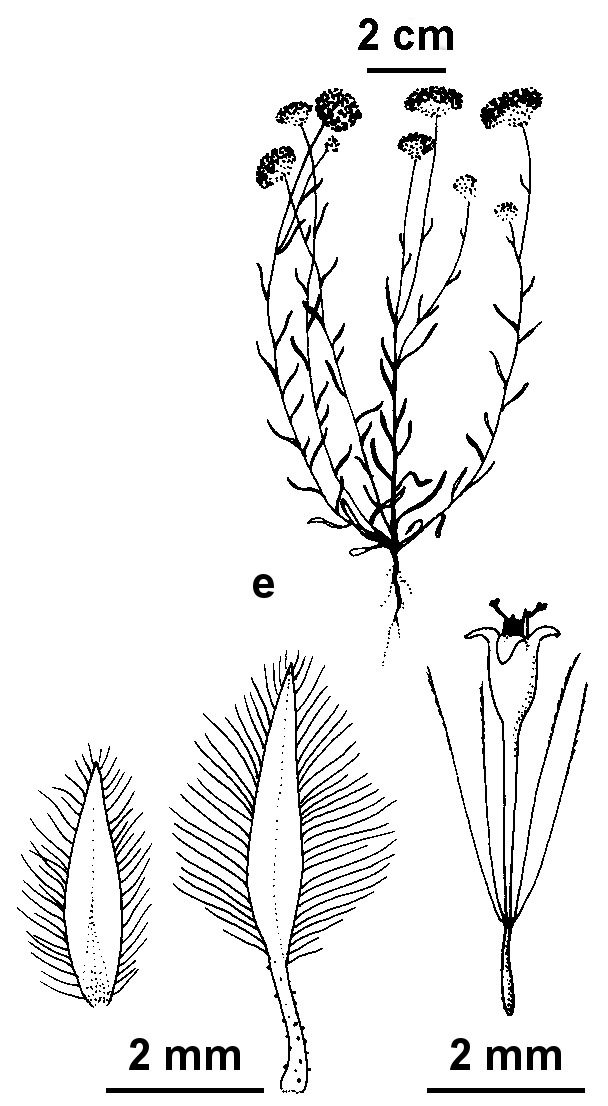Leptorhynchos tetrachaetus
(Schltdl.) J.M.Black Beauty ButtonsAnnual, 5–15 cm high, usually much-branched, ascending to erect; stems wiry, glabrous to sparsely cottony (usually cottony below capitula). Leaves linear, narrow-oblanceolate or -lanceolate, mostly 3–20 mm long, 1–2 mm wide, acute, upper surface glabrous or with scattered papillose or tubercle-based hairs, undersurface usually cottony, margins usually recurved; scarious bracts much-reduced, extending for up to c. 5 cm below capitula. Capitula c. obconical, 5–10 mm diam.; outer involucral bracts lanceolate, acute, yellow-translucent, sometimes golden, margins densely ciliate; innermost bracts linear, mostly herbaceous and glandular, with slightly dilated, transparent, ciliate tip; florets yellow. Cypsela obscurely beaked, 1–1.5 mm long, papillose to minutely scabrous; pappus white, bristles of bisexual florets 4 (rarely 5), those of female florets 2 or 3, minutely barbellate, c. 3 mm long. Flowers Sep.– Dec.
LoM, MuM, Wim, VRiv, MSB, MuF, Gold, CVU, GGr, NIS. Also SA, NSW. In Victoria mostly in the north-west, in grassy flats, open herbfields, woodlands and open shrubland, usually on more fertile mallee soils that may be somewhat saline.
Flann, C. (1999). Leptorhynchos. In: Walsh, N.G.; Entwisle, T.J., Flora of Victoria Vol. 4, Cornaceae to Asteraceae, pp. 769–774. Inkata Press, Melbourne.
 Spinning
Spinning


